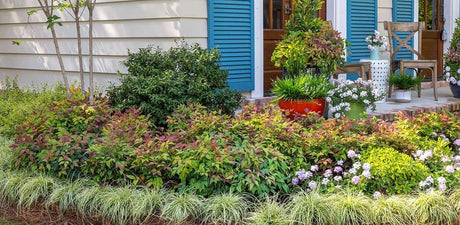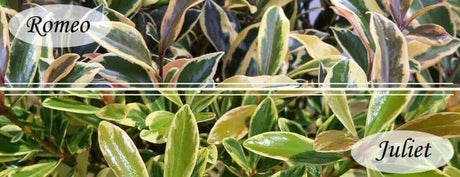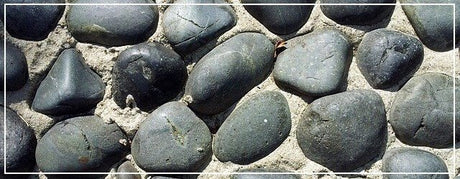

It's a Cleyera Affair! - New Variegated Cleyera Varieties
|
|
Time to read 3 min
|
|
Time to read 3 min
Wait a minute… Are those star-crossed lovers in your garden providing an elegant twist of color and texture, taking your landscape to the next level?!
Nope, it’s two new exciting variegated Cleyera varieties! The Romeo and Juliet Cleyera from the Southern Living Plant Collection to be precise. (And that makes much more sense when you think about it)
We’re going to cover both of these exciting new Cleyera varieties today and highlight what exactly makes them all stars.
Surprisingly enough, Juliet is not technically a true Cleyera. But neither are many ‘Cleyera’ that you see decorating landscapes nationwide. It belongs to the Ternstroemia family, which is often referred to as False Japanese Cleyera. However, due to their widespread popularity, over time, they have come to adopt the name ‘Cleyera’ themselves. This group includes varieties such as Bigfoot, LeAnn, and Bronze Beauty.
Ternstroemia Cleyera features classic glossy green leaves with a soft and leathery texture. These leaves are traditionally 2.5 to 4 inches long, with a slightly rounded point. At the same time, new growth tends to range in color from bronze to red (or reddish-bronze) on this species.
Well, for starters, fantastically variegated foliage! Olive green leaves with creamy white edges are evergreen all year long. This crisp foliage emerges in shades of maroon, adding a whole new level of interest. Moreover, it takes the traditional practicality and reliability of other False Japanese Cleyera and adds a tasteful touch of color variety. Wrap all of this up with a naturally compact and dense nature, and you’ve got a real winner on your hands.
Let it grow tall, or keep it short. Juliet excels both ways!
It’s a great choice if you want a privacy screen that brings more foliage color to the table than other screen plants. At its mature height of 8-10′ tall, you’ll have plenty of coverage from unwanted street noise and road pollution (or nosy/noisy neighbors).
Use it as a short hedge by trimming yearly in early spring to your desired height. It frames houses and structures beautifully. In addition, darker-colored homes stand out, thanks to the variegated foliage.
Try them in a mixed garden bed with contrasting color and texture shrubs, such as the Purple Diamond Loropetalum, Purple Pixie Loropetalum, Baby Gem Boxwood, Scentamazing Gardenia, or Jubilation Gardenia. It’s perfect for brightening up spots with numerous darker-colored plants.
It even looks great in a container. Although, as you would expect, trimming is required if you choose to go this route!
Juliet is hardy from zones 7-10 and is known to be impressively disease and pest-resistant, as well as heat-tolerant. Cleyera became popular when they started being used as a hardy replacement for the disease-prone Red Tip Photinia.
They’re salt spray tolerant, making them perfect for Coastal plantings. A moderate growth rate makes it easy to maintain this variety at your desired size.
It does well in both Full and Partial Sun and prefers acidic soil for proper growth. Also good drainage is crucial for long-term success as well.
Romeo actually IS a true Cleyera! It falls under the scientific name Cleyera japonica, and the common name Japanese Cleyera. C. japonica is native to warmer locations in Asia, particularly Japan, Taiwan, and China. Local people of the Shintō faith even consider it to be a sacred plant. However, ‘Sakaki tree’ is the traditional name in those areas.
The C. japonica features similarly sized leaves to the Ternstroemia varieties, traditionally 2.5-4 inches long. These leaves tend to be oval, shiny, and dark green as well. Where True Japanese Cleyera leaves differ, though, is that they have a more defined point on the end.
Romeo’s foliage is gorgeously variegated and features a cream-white to golden edge extending toward the center. Towards the middle of the leaf, Romeo’s leaves are a dark emerald green, which creates a dynamic contrast.
In fall and winter, the Romeo Cleyera’s foliage turns a rosy red to pink hue. This change pops on the variegated foliage and adds a new season of interest.
Romeo grows from 8-10′ H x 5-6′ W like Juliet. It excels as a privacy screen or windbreak due to its size and dense foliage. It also makes for a unique and impressive mass planting.
Because of its compact nature and moderate growth rate, a yearly trim will keep it at your desired size. Therefore, it shines as a low border/hedge, or container plant.
It’s hardy from USDA Zones 7-10 and grows best in Full Sun to Part Shade.Southerners will appreciate its heat tolerance and its disease and pest resistance.
Mildly acidic to neutral soil will achieve the best results for this shrub. Also, please make sure that your soil drains well to avoid root rot.
Thanks for reading, and don’t hesitate to contact us if you have any questions!


PBM Team |


PBM Team |


PBM Team |

